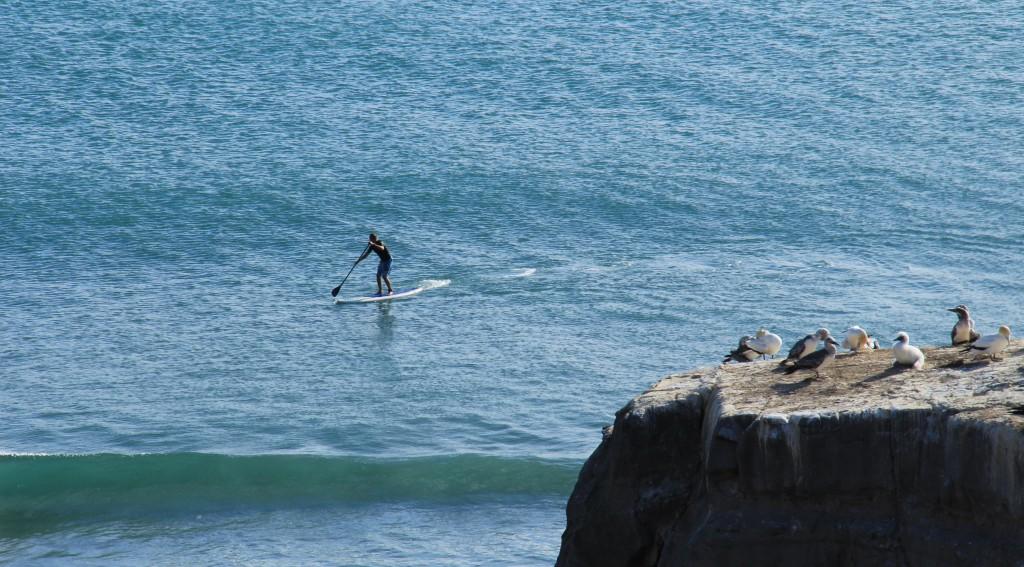Muri – Wai. End of the Water.
One of Auckland’s most popular tourist attractions is a bird colony on the rugged West Coast less than an hour from the city centre.
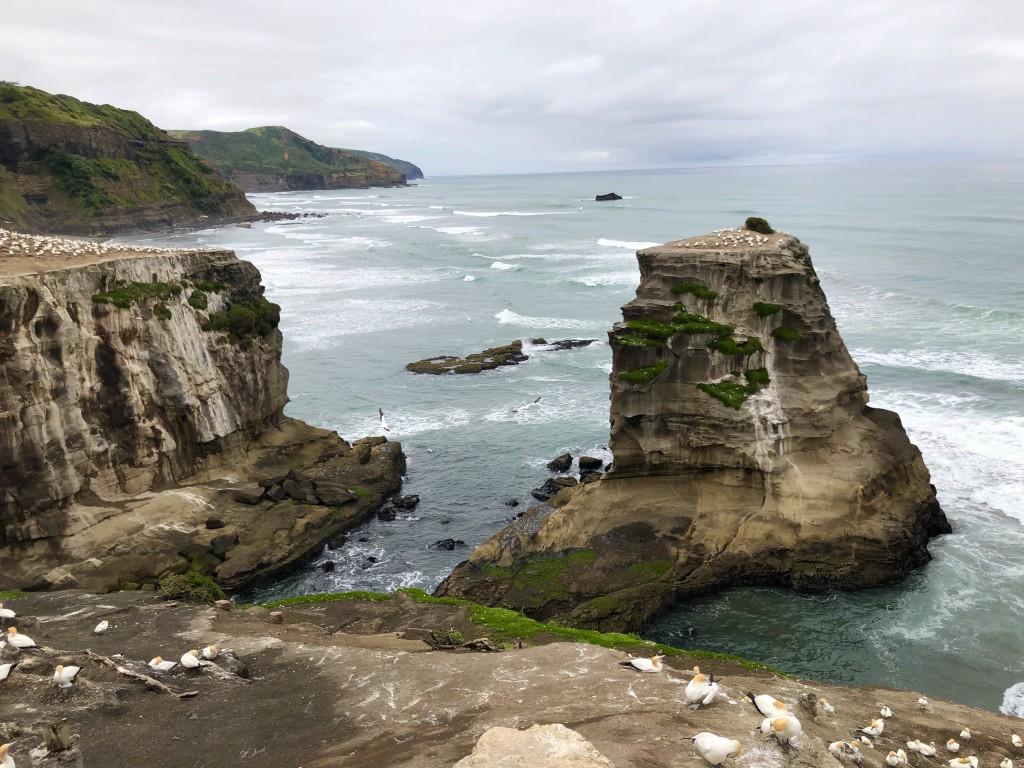
“Nature dominates this land and sea. We can’t and won’t tame it. There are higher forces than us at work – just look at the majesty of our birds, the sun, wind and waves… whakaute, whakaute [respect it all].” –a Muriwai local
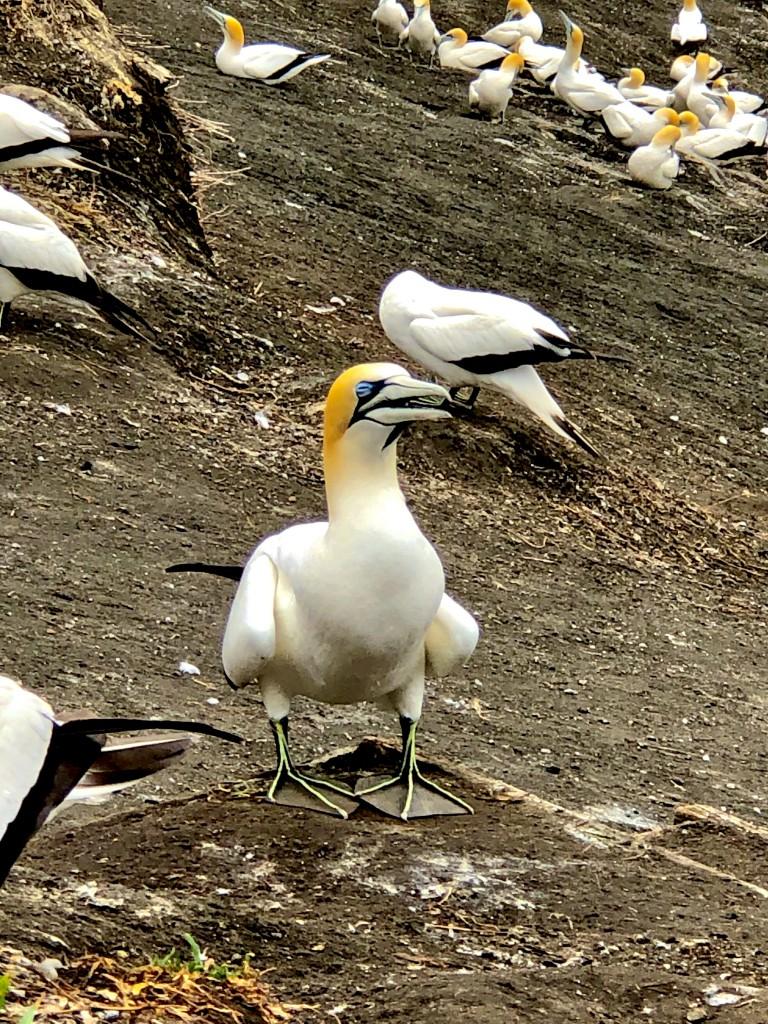
A male gannet fiercely guards his territory.
Muriwai is a battleground between elemental forces. As Tāwhirimātea (Lord of weather) fights his brothers Tangaroa (Lord of the sea) and Tāne (Lord of the forests), the gannets (takapu) wage their own battles to protect and feed their chicks in a teeming, heaving, noisy, nursery.
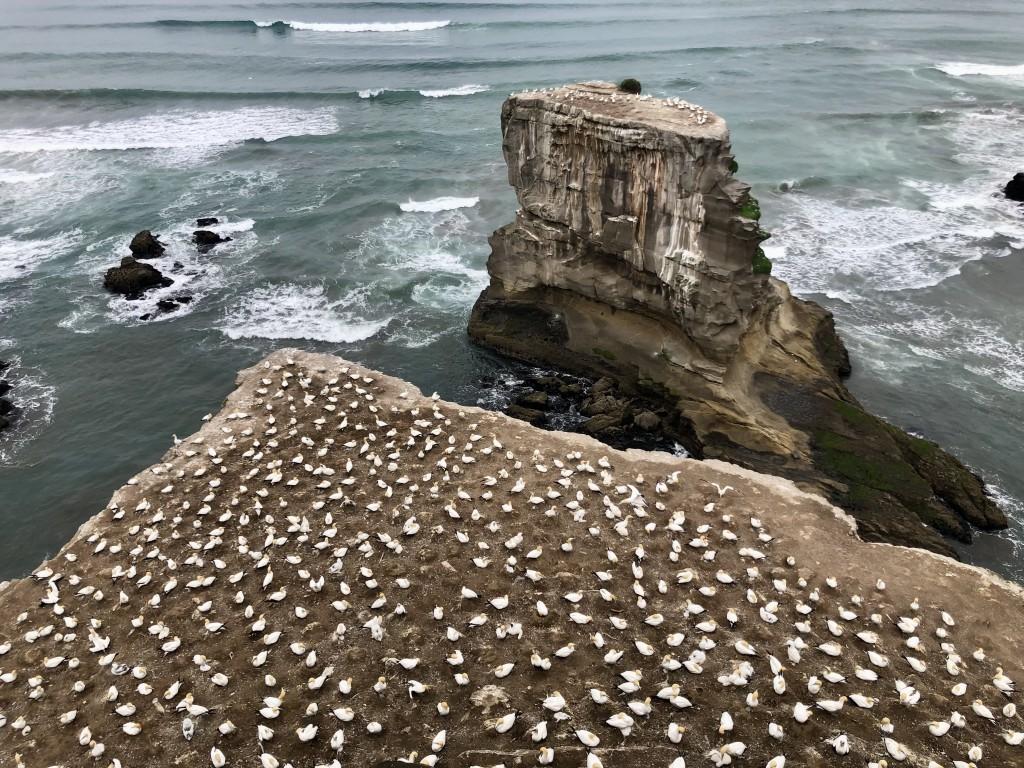
The nests pepper the cliffs and on two vertical islands close by.
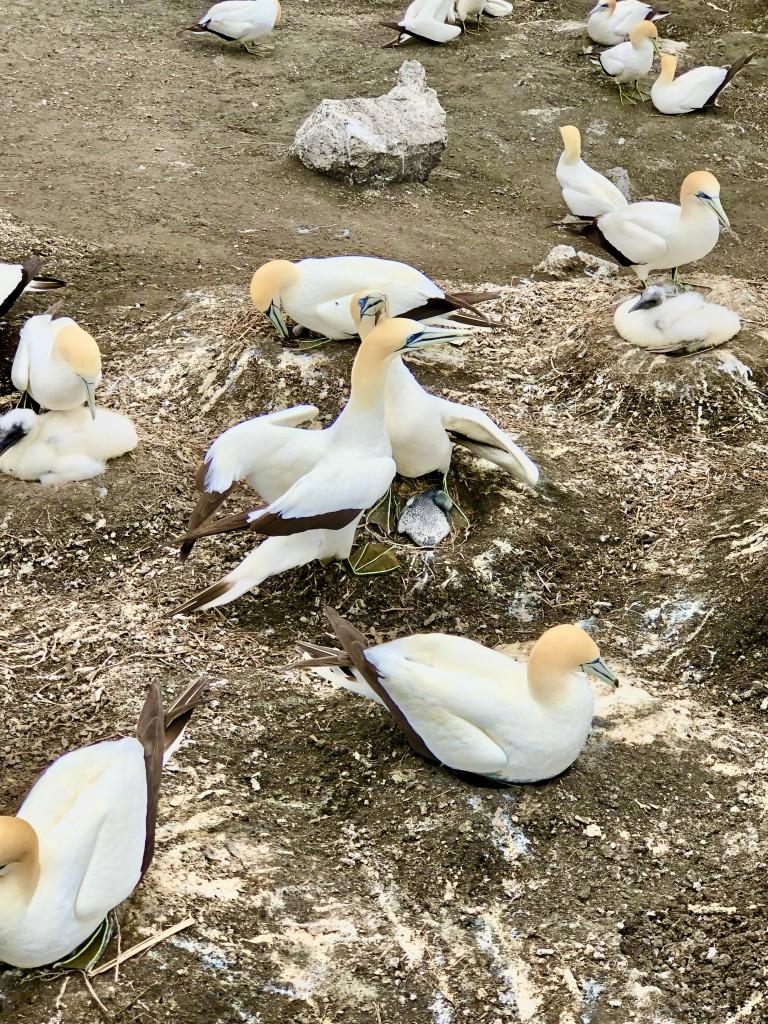
Gannets mate for life and reunite here at Muriwai on the same nests to start a new family. Both parents sit on the nest until hatching and then take turns at babysitting. While one minds the offspring, the other roams the ocean seeking anchovy, yellow eyed mullet and when they find it, squid. While the chick eats a regurgitated meal from the hunt, parents will eat as they fly.
Birds flying overhead are a flight controllers’ nightmare
Before the bush tracks open to reveal the wide sea and cliffs, the stench of guano and screech of bird calls assault the senses. In the maze of birds on wing and on nests there is ordered chaos – each pair of gannets linked for life to a tiny piece of Muriwai with every bird knowing its location and place in the colony’s hierarchy.

Surfers in the line up are framed by toi toi plants and gannets overhead.
Why do tourists go to Muriwai?
While some nations offer visitors beauty of architecture, culture, art, or famous cuisines, New Zealand unashamedly stands back and lets its environment take charge. Muriwai Beach is over 60 kilometres long and stands between the huge waves of the Tasman Sea and the Waitakere Ranges where ancient forests reach up to the sky.
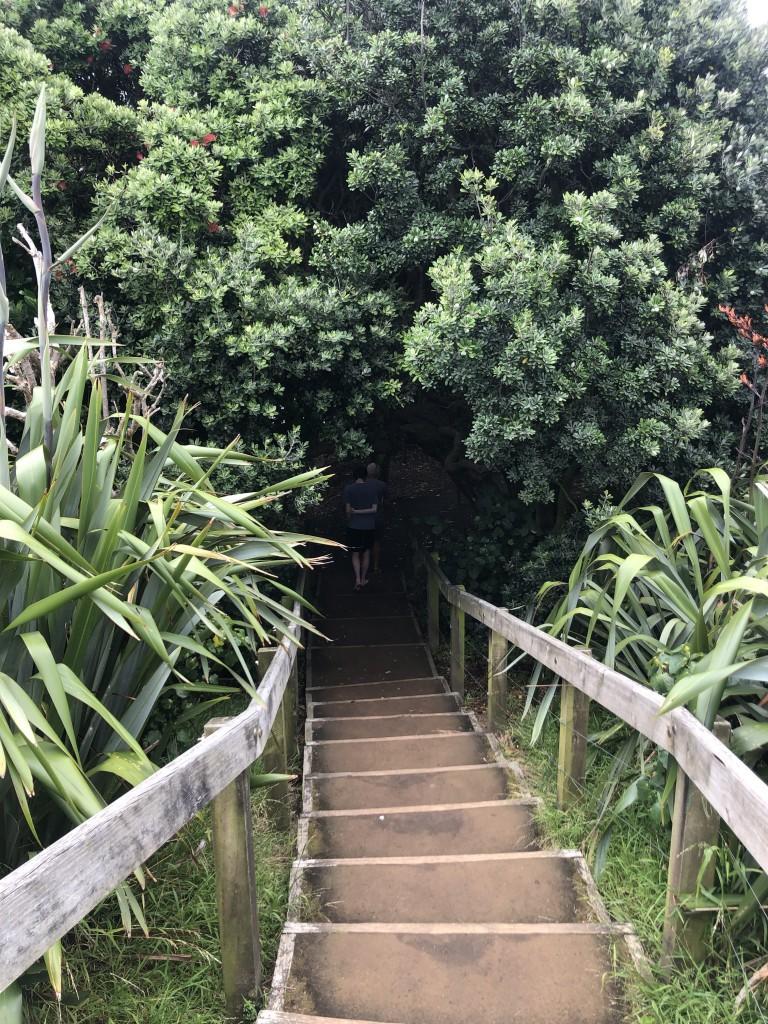
A track is swallowed by native forest.
Muriwai has an energy and rawness that surprises first time visitors. Nothing is subtle in this landscape; not the surf, the cliffs, the endless black sands or the wildlife that thrives in the sea and shores.
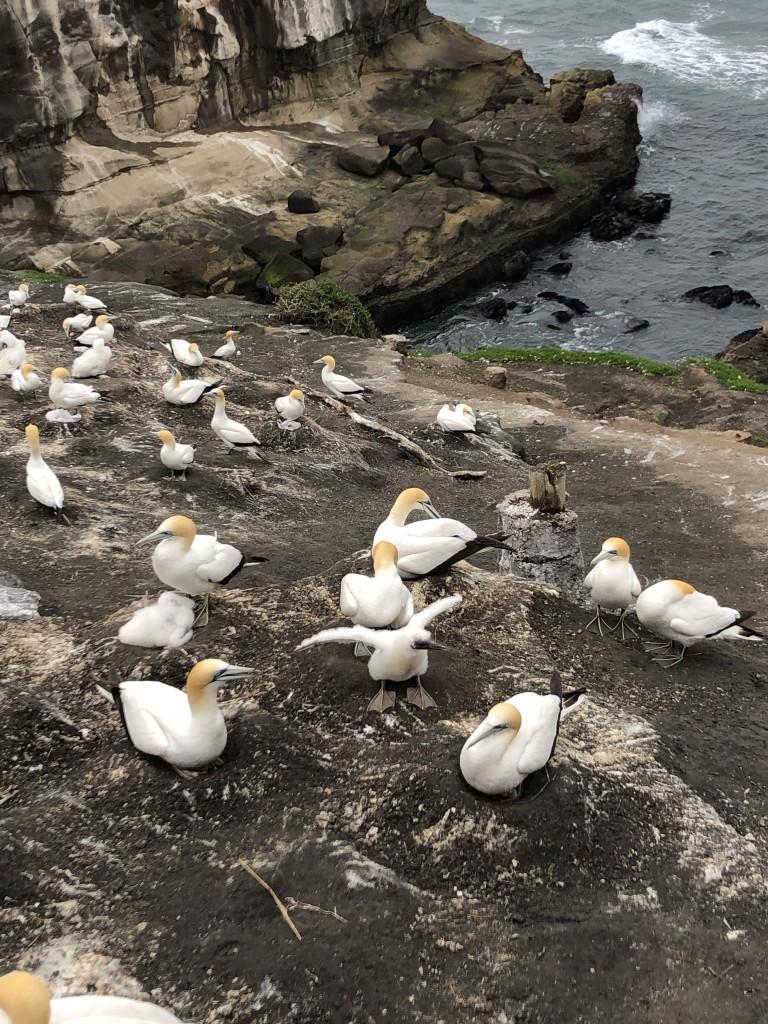
A chick stretches its wings. By March it will have been forced off the cliff by its parents in a ‘fly or die’ trial.
Young gannets that survive their childhood test cross the Tasman Sea to Australia. Surviving birds return each year to mate, find a nest and continue the cycle of gannet existence at Muriwai.
Nature’s playground
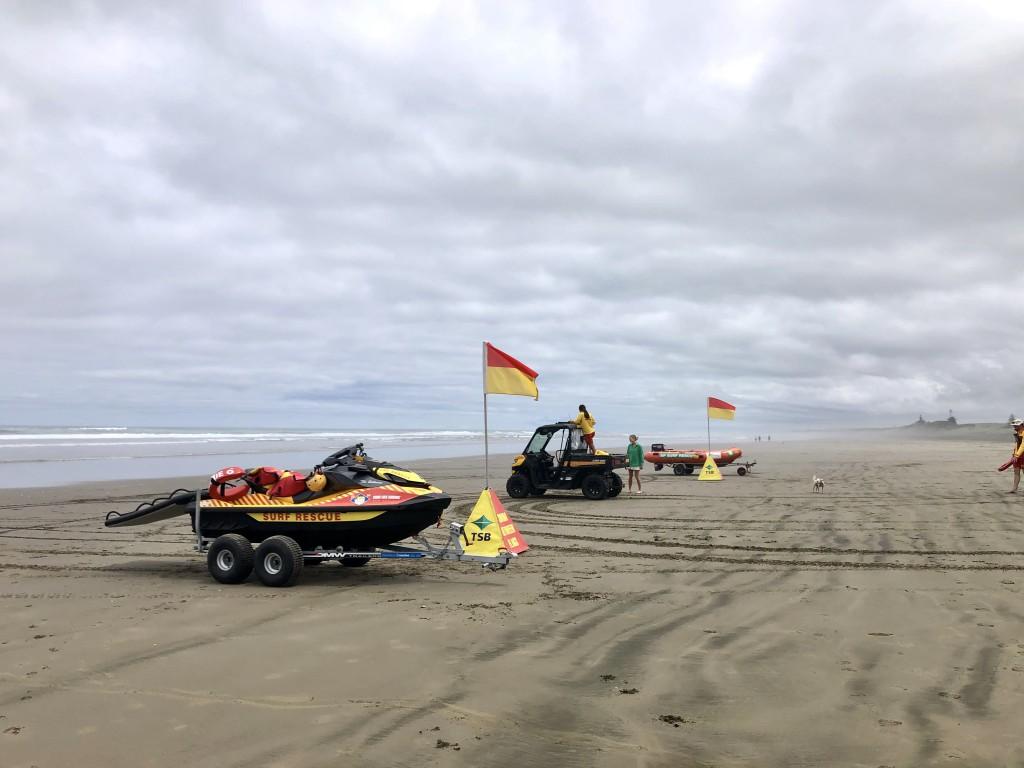
Muriwai Surf Club volunteer lifeguards on the beach are focused on swimmers near shore and surfers beyond the white-water.
Surf novices practice close to shore, while further out the waves bring their energy and power to more experienced riders.
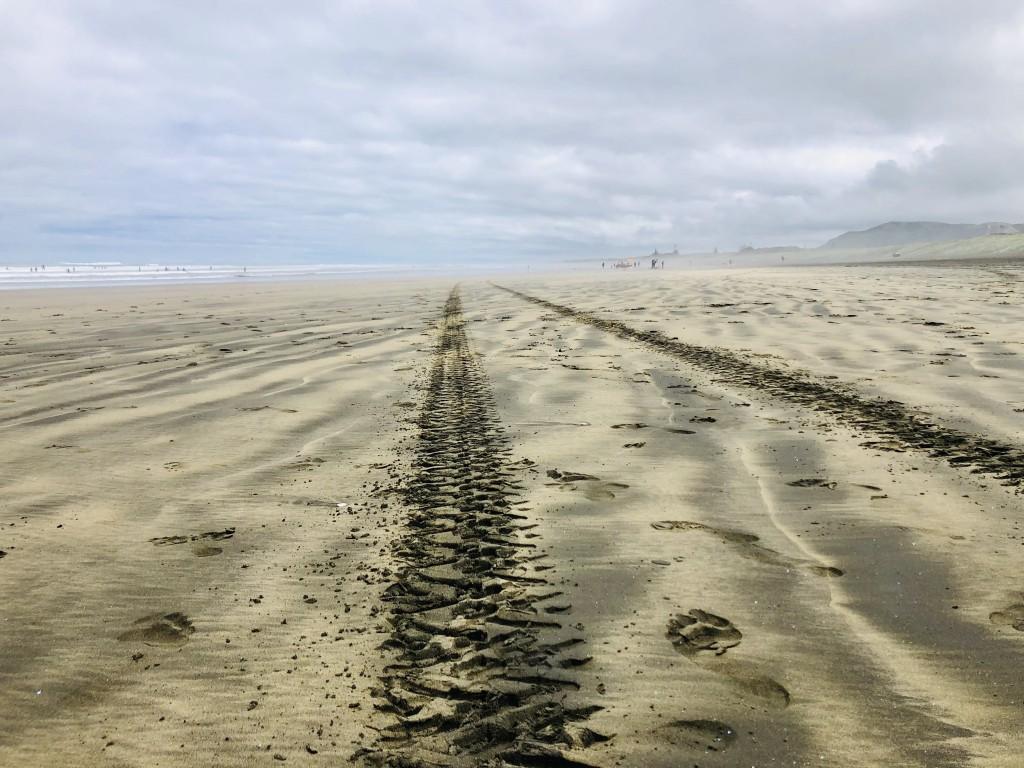
While 60 kilometres of beach are popular with hikers, it’s the array of short walks or mountain bike trails that also draw locals and tourists to Muriwai.
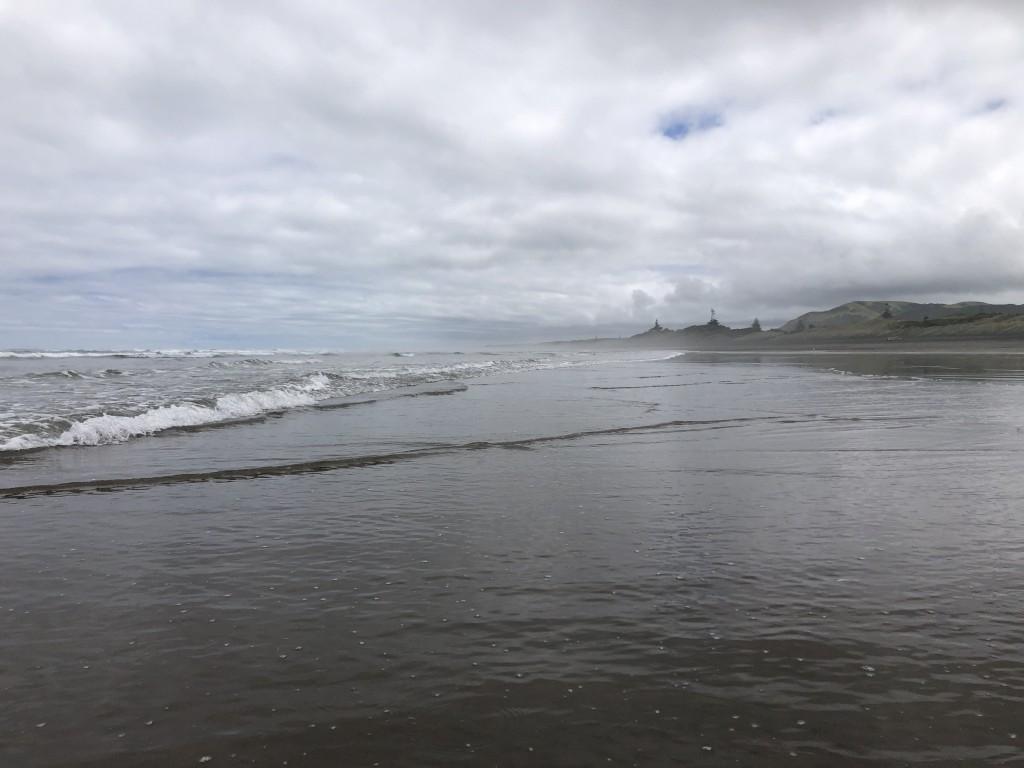
Even on the clearest days, the end of Muriwai can’t be seen. Sand and water merge into sky.
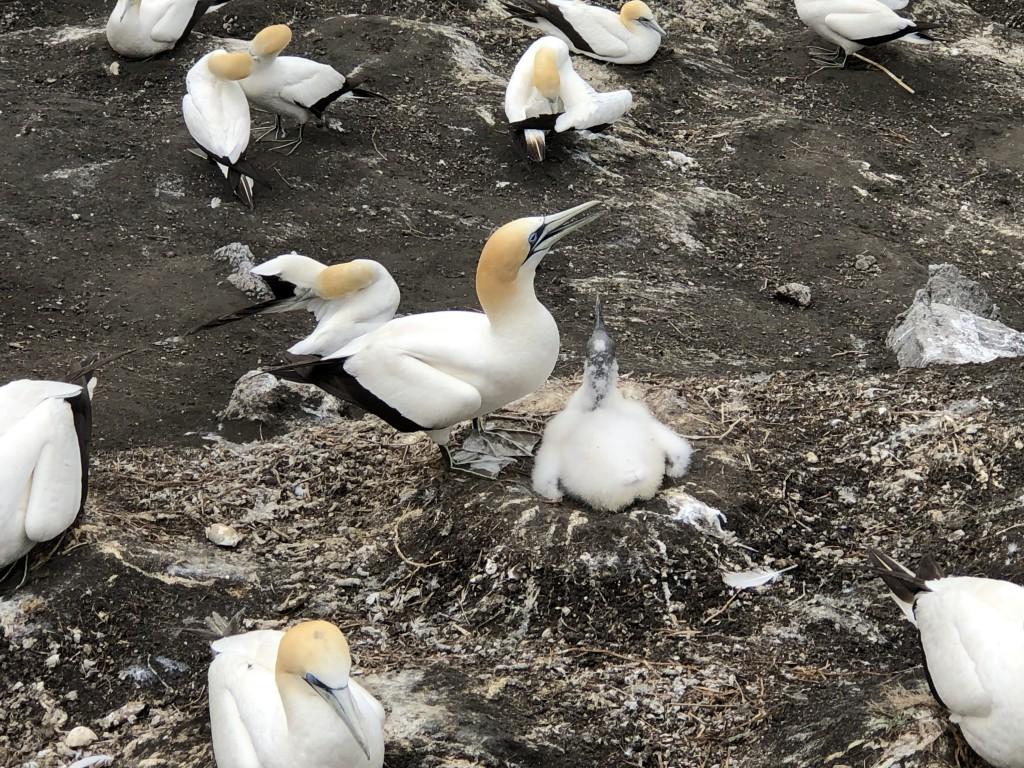
New Zealand’s Project Jonah — How a nation learnt to save whales
